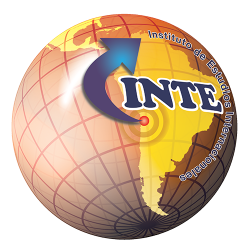A contested invention at the start of the Cold War
Uncle Sam, progress and identities under the gaze of Topaze in 1951
DOI:
https://doi.org/10.61303/07190948.v24i.1138Keywords:
political satire, Cold War, mestizo (mixed race) heritage, Topaze magazineAbstract
At the start of the Cold War, the Chilean magazine Topaze condemned American interventionism in terms of economic, educational and foreign policy matters. The magazine’s cartoons and articles represented an anti-imperialist approach in the context of Chilean magazines published in 1951, which generally legitimised the Western and North American political order, values and way of life. Patriotism resurfaces in this publication in order to condemn the Yankee presence, founded on the basis of Chile's heritage and wealth of natural resources. Consequently, the country’s citizens are assured a place within a project of national identity. In the analysis of the magazine’s contents, three aspects of social sovereignty can be identified that are linked to the popular susceptibility of its editorial line: political, economic and cultural. These formed the basis for articulating a sense of identity, which was created as a way of contesting neighbouring countries, North American capital and the hegemony of a foreign educational model. Without undermining or challenging social hierarchies, the magazine recognises popular culture as the repository of the nation's moral compass. The presence of Uncle Sam thus contributes to the creation of national unity, in the context of deepening the contradictions generated within a process of modernisation.
Downloads
References
Abella, R. y Rueda, H. (2017). Un país de tontos graves. Humor gráfico y política en Chile. Museo Histórico Nacional
Acevedo, D. (2003). La caricatura editorial como fuente para la investigación de la historia de los imaginarios políticos: reflexiones metodológicas. Historia y Sociedad, 9, 151-173.
Alcorta, A. G. y Bosio, F. O. (2012). Bernardo O’Higgins Riquelme: revolucionario y transformador ilustrado. Conocimiento para el desarrollo, 3(2), 137-144. https://revista.usanpedro.edu.pe/index.php/CPD/article/view/204
Bivins, T. H. (1987). The Body Politic: The Changing Shape of Uncle Sam. Journalism Quarterly, 64(1), 13–20. https://doi.org/10.1177/107769908706400102 DOI: https://doi.org/10.1177/107769908706400102
Burgess, J. W. (1963). Uncle Sam. Jahrbuch Für Amerikastudien, 8, 249–260. https://www.jstor.org/stable/41155042
Buttes, S. (2017). Cold war caricatures: ‘Topaze’, hunger and the politics of poverty in 1960s Chile. Chasqui, 46(1), 244–260.
Cabrera, T. y Riquelme Rivera, J. (2013). Integración latinoamericana: algunas notas y enfoques para la discusión / Latin American integration: some notes and perspectives to discussion. Si Somos Americanos. Revista De Estudios Transfronterizos, 9(1), 183-194. https://www.sisomosamericanos.cl/index.php/sisomosamericanos/article/view/280 DOI: https://doi.org/10.61303/07190948.v9i1.280
Clift, R. (1999). “Irony in Conversation”. Language in Society, 28(4), 523-553. DOI: https://doi.org/10.1017/S0047404599004029
De Ramón, A. (2003). Historia de Chile: desde la invasión incaica hasta nuestros días (1500-2000). Catalonia.
Department of State. (1952). United States Treaties and Other International Agreements. https://tile.loc.gov/storage-services/service/ll/lltreaties//lltreaties-2-1/lltreaties-2-1.pdf
Escobar., A. (1995). Encountering development: the making and unmaking of the Third World. Princeton University Press.
Eyzaguirre, A. (2001). Jorge Délano “Coke” (1964) ¿Yo soy tú? En: J. Hott y C. Larraín (Eds.), Veintidós Caracteres (106-116). Unidad Finis Terrae.
Fermandois, J. (2015). Entusiasmo y desconfianza. Populismo y relaciones internacionales en el caso Perón-Ibáñez, 1953-1955. Ayer, 98(2), 187-211.
Garay, C., Soto, Á. y Troncoso, V. (2016). Política internacional y política doméstica en Gabriel González Videla, 1946-1952: La sombra de la guerra fría. Cuadernos de Historia (Santiago), (44), 81-100. https://dx.doi.org/10.4067/S0719-12432016000100004 DOI: https://doi.org/10.4067/S0719-12432016000100004
Gutiérrez, H. (2010). Exaltación del mestizo: La invención del Roto Chileno. Universum (Talca), 25(1), 122-139. https://doi.org/10.4067/S0718-23762010000100009 DOI: https://doi.org/10.4067/S0718-23762010000100009
Hasson, M. (2017). Sátira política en Chile (1858-2016). Catálogo de 150 años de publicaciones de humor, sátira y política. Nauta Colecciones.
Iverson, K. (1951). Don Gabriel González Videla President of Chile. World Affairs, 114(4), 109-111.
Foreign Relations of the United States. (1951) The United Nations; The Western Hemisphere, Volume II. 611.25/2–2751. Secret. Policy Statement Prepared in the Department of State. Chile. February 27. https://history.state.gov/historicaldocuments/frus1951v02/d729
Gros, C. (2002). América Latina: ¿identidad o mestizaje? La nación en juego. Desacatos, 10, 127-147.
Heine, J. (2011). ¿Qué pasó, Tío Sam? Los Estados Unidos y América Latina después del 11 de septiembre. Estudios Internacionales, 35(138). https://doi.org/10.5354/0719-3769.2002.14716 DOI: https://doi.org/10.5354/0719-3769.2002.14716
Jiménez-Varea, J. (2008). Uncle Sam: imagen emblemática y personificación patriótica de Estados Unidos de América. En A. Checa y M. Ramírez-Alvarado (Coords.), Visiones de América: comunicación, mujer e interculturalidad (pp. 23-48). Netbiblo. https://doi.org/10.4272/978-84-9745-250-2.ch2 DOI: https://doi.org/10.4272/978-84-9745-250-2.ch2
Lacoste, P. (2022). La imagen del otro en Chile y Argentina a través de la prensa satírica: la revista Topaze frente a los
conflictos de límites (1938-1965). Revista Notas Históricas y Geográficas, 30, 63-90.
Lacoste, P. y Garay, C. (2022). Perón e Ibáñez en la revista satírica Topaze (1950- 1955): el populismo y la democracia en Chile. Revista Notas Históricas y Geográficas, 28, 136–172.
Montealegre, J. (2008). Historia del humor gráfico en Chile. Editorial Milenio.
Montealegre, J. (2014). Carne de estatua. Allende, caricatura y monumento. Mandrágora Ediciones. https://doi.org/10.5354/0719-3734.2014.30900 DOI: https://doi.org/10.5354/0719-3734.2014.30900
Mouffe, C. (2005). On the Political. Routledge.
Pinto, A. (1971). El modelo de desarrollo reciente de la América Latina. El Trimestre Económico, 38(150), 477-498. https://doi.org/20856208
Rusieshvili, M. y Kenkadze, I. (2015). “The Problems of Interpretation of Ironic Speech Acts”. The European Conference on Language Learning. Official Conference Proceedings. The International Academic Forum. https://papers.iafor.org/wp-content/uploads/papers/ecll2015/ECLL2015_14597.pdf
Rodríguez, F. (2007). Nuevos tipos de guerra: lecciones a considerar, guerra justa, asimétrica, preventiva y de baja intensidad / New Types of War: Lessons to consider, Fair War, Asymmetric War, Preventive War, and Low Intensity War. Si Somos Americanos. Revista De Estudios Transfronterizos, 8(2), 135-157. https://www.sisomosamericanos.cl/index.php/sisomosamericanos/article/view/298 DOI: https://doi.org/10.61303/07190948.v8i2.298
Salinas, M. (2006). La vida y las aventuras cotidianas de Juan Verdejo según la revista Topaze en 1938. Revista de Ciencias Sociales (Iquique), 16, 65-82.
Salinas, M. (2008). ¿Una risa jerárquica? La revista Topaze: características y límites de la sátira política en Chile. Revista de Ciencias Sociales, 20, 95–105. https://www.redalyc.org/articulo.oa?id=70802005
Searle, John R. (1991). Metaphor. En S. Davis (Ed.), Pragmatics: A reader. Oxford University Press (pp. 519-539).
Sunkel, O. (1991). Del desarrollo hacia adentro al desarrollo desde dentro. Revista Mexicana de Sociología, 53(1), 3–42. https://doi.org/10.2307/3540827 DOI: https://doi.org/10.2307/3540827
Taylor, C. (2006). Imaginarios sociales modernos. Paidós.
Downloads
Published
How to Cite
Issue
Section
License
Copyright (c) 2024 Juan Carlos Skewes, Silvina Sosa Vota y Paulina Faba

This work is licensed under a Creative Commons Attribution 4.0 International License.
Authors who publish in Si Somos Americanos agree to the following terms:
- Authors retain copyright and grant the journal right of first publication with the work simultaneously licensed under a Creative Commons Attribution License 4.0 (CC BY 4.0) that allows others to share the work with an acknowledgement of the work's authorship and initial publication in this journal.
- Authors are able to enter into separate, additional contractual arrangements for the non-exclusive distribution of the journal's published version of the work (e.g., post it to an institutional repository, website or publish it in a book), with an acknowledgement of its initial publication in Si Somos Americanos.
- Authors are permitted and encouraged to post their work online (e.g., in institutional repositories or on their website) after the work has been published in Si Somos Americanos.











